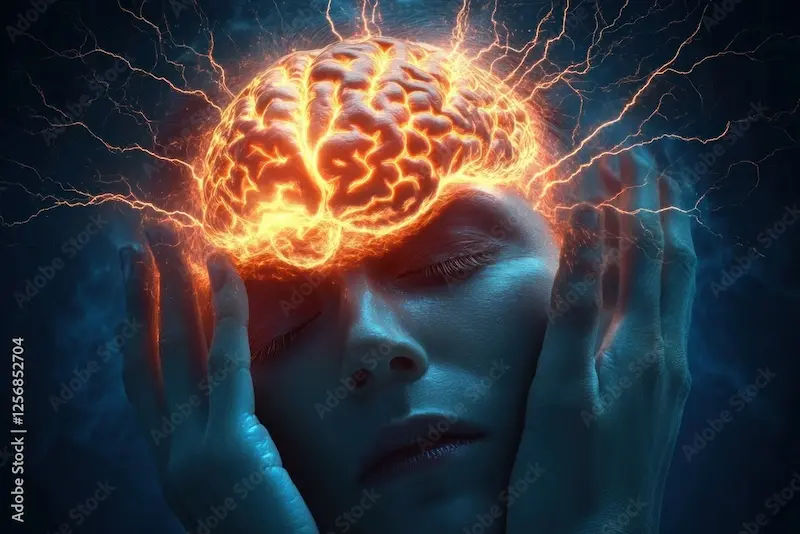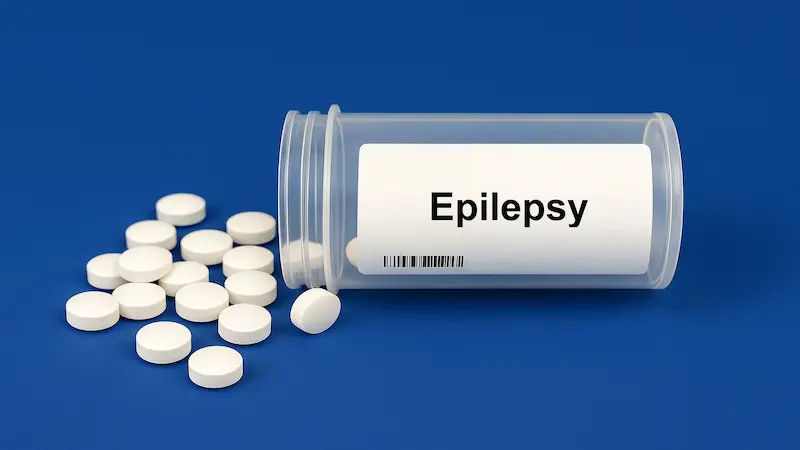Epilepsy Can Be Treated: A Modern Guide to Managing Seizures
Know about epilepsy, what it is, causes, treatment options, diagnosis, living with epilepsy and more.

Written by Dr. J T Hema Pratima
Reviewed by Dr. Rohinipriyanka Pondugula MBBS
Last updated on 14th Sep, 2025

Introduction
Receiving an epilepsy diagnosis can feel overwhelming, filled with uncertainty and questions about the future. But here’s the most important message you need to hear: epilepsy can be treated. For the vast majority of the millions of people living with epilepsy worldwide, seizures can be successfully managed, allowing for a full, active, and vibrant life. This isn't about merely coping; it's about taking control through a modern, multi-faceted approach to treatment. This guide will walk you through everything from understanding what epilepsy is and how it's diagnosed, to exploring the wide range of treatment options available today—from medication and diet to advanced surgery and devices..
What is Epilepsy? Moving Beyond the Myths
Epilepsy is not a single disease but a spectrum of neurological disorders characterised by a tendency to have recurrent, unprovoked seizures. A seizure is a sudden, uncontrolled electrical disturbance in the brain. It can cause changes in your behaviour, movements, feelings, and levels of consciousness. One of the biggest myths is that all seizures involve convulsions. In reality, seizure types vary dramatically; some involve staring spells, brief lapses in awareness, or unusual sensations.
The causes of epilepsy are equally diverse. For about half of individuals with the condition, the cause is unknown (idiopathic). For others, it can be traced to:
Genetic influences
Head trauma
Brain conditions like strokes or tumours
Infectious diseases such as meningitis
Prenatal injury or developmental disorders
Understanding that epilepsy is a manageable medical condition, not a defining label, is the first step toward effective treatment.
Consult Top Specialists for Personalised Tips
It's More Than Just Convulsions: Understanding Seizure Types
Seizures are broadly classified into two groups: Focal Onset (starting in one area of the brain) and Generalised Onset (affecting both sides of the brain from the start). Focal seizures might cause a change in emotion or sensation (an "aura") or involuntary jerking. Generalised seizures include the well-known tonic-clonic (grand mal) seizures with stiffening and jerking, as well as absence (petit mal) seizures, which appear as brief staring spells.
What Causes Epilepsy? Triggers and Underlying Factors
While the root cause may be structural or genetic, individual seizure triggers can precipitate an event. Common triggers include lack of sleep, stress, flashing lights, alcohol or drug use, and specific times in the menstrual cycle for some women. Identifying your personal triggers is a powerful part of managing epilepsy.
How is Epilepsy Diagnosed? The Path to Clarity
A proper diagnosis is the cornerstone of effective treatment. If you or a loved one experiences a possible seizure, it's crucial to consult a neurologist. The diagnostic process involves piecing together a detailed history and conducting tests to confirm the diagnosis and locate the seizure's origin.
The Crucial Role of Your Seizure Diary
One of the most valuable diagnostic tools is a detailed seizure diary. Documenting the time, duration, what happened before and after, and any potential triggers provides your doctor with invaluable clues that tests cannot. This history is often more critical than any single test result.
Key Diagnostic Tests: EEG, MRI, and More
Electroencephalogram (EEG): This test records the brain's electrical activity and can detect abnormal patterns that suggest epilepsy. It's the most common test used.
MRI (Magnetic Resonance Imaging): An MRI scan provides detailed images of the brain to look for structural causes like scars, tumours, or malformations that could be causing seizures.
Blood Tests: These can help rule out other conditions that might cause seizures, such as diabetes, infections, or genetic disorders.
If you experience a seizure for the first time, consulting a neurologist online with Apollo24|7 can be a quick first step to discuss your symptoms and determine the necessary diagnostic path.
Epilepsy Treatment Options: Building Your Management Plan
The goal of epilepsy treatment is complete seizure freedom with no side effects, and for about 70% of people, this is achievable with anti-seizure medications (ASMs). For others, a combination of therapies offers the best path to control.
Anti-Seizure Medications (ASMs): The First Line of Defense
Medications are the most common and effective initial treatment. They work by stabilising the electrical activity in your brain. There are many types, and finding the right one is a process.
Finding the Right Medication and Dosage
It often takes time to find the perfect drug and dosage. Your doctor will start with a low dose and gradually increase it, monitoring for seizure control and side effects. It's vital to take your medication exactly as prescribed and never stop abruptly, as this can trigger severe seizures.
Dietary Therapies: The Ketogenic Diet and Modifications
For some, particularly children with drug-resistant epilepsy, high-fat, low-carbohydrate diets like the ketogenic diet can significantly reduce seizure frequency. Modified versions like the Modified Atkins Diet are also used under strict medical supervision.
Surgical Interventions for Drug-Resistant Epilepsy
When medications fail (a condition known as refractory or drug-resistant epilepsy), surgery may be an option. This involves removing the specific area of brain tissue where seizures originate. Success rates are high for eligible candidates, with many achieving complete seizure freedom.
Advanced Neuromodulation Devices: VNS, DBS, and RNS
For those who aren't candidates for surgery, devices that modulate the nervous system can help:
Vagus Nerve Stimulator (VNS): A pacemaker-like device implanted in the chest that sends mild electrical pulses to the brain via the vagus nerve.
Deep Brain Stimulation (DBS): Electrodes are implanted deep within the brain to deliver electrical stimulation.
Responsive Neurostimulation (RNS): A device that detects abnormal electrical activity and delivers a stimulus to stop a seizure before it begins.
Living Fully with Epilepsy: Safety, Lifestyle, and Support
Treatment extends beyond clinical interventions. Managing epilepsy effectively involves adapting your lifestyle and building a strong support network.
Identifying and Avoiding Your Seizure Triggers
Keeping a consistent sleep schedule, managing stress through mindfulness or yoga, and avoiding known triggers like excessive alcohol are foundational to good seizure control.
Mental Health and Epilepsy: Addressing Anxiety and Depression
Living with a chronic condition can be challenging. It's common to experience anxiety or depression. Seeking therapy or counselling is a sign of strength, not weakness, and is a critical component of holistic care.
Building a Strong Support System
Connecting with others who understand is invaluable. Support groups, both online and in-person, can provide practical advice, reduce feelings of isolation, and offer immense emotional comfort.
The Future of Epilepsy Treatment: Research and Hope
The field of epilepsy treatment is rapidly advancing. Researchers are exploring new anti-seizure medications with fewer side effects, more precise laser ablation surgeries, and even gene therapies and stem cell treatments for specific genetic syndromes. The future is bright, with a focus on personalised medicine tailored to an individual's unique brain biology.
Conclusion
An epilepsy diagnosis is the beginning of a new chapter, not the end of the story. As we've outlined, the arsenal of treatments available today is more powerful and diverse than ever before. From highly effective medications to groundbreaking surgical techniques and neurostimulation devices, the path to seizure freedom is a real possibility for most. The journey requires partnership with a skilled medical team, patience in finding what works for you, and a commitment to a healthy lifestyle.
Consult Top neurologist
Consult Top Specialists for Personalised Tips

Dr. Sandeep Gurram
Neurologist
12 Years • MBBS, MD(Internal Medicine), DM(Neurology), PDF(Movement disorders) - NIMHANS
Secunderabad
Apollo Hospitals Secunderabad, Secunderabad

Dr Debnath Dwaipayan
Neurosurgeon
9 Years • MBBS, MS(Gen. Surgery), DrNB (Neurosurgery)
Delhi
Apollo Hospitals Indraprastha, Delhi

Dr. K Siva Rama Gandhi
Neurologist
11 Years • MBBS, DNB (Gen. Med.) DNB (Neurology) MBBS.,MD.,DNB
Kakinada
Apollo Hospitals Surya Rao Peta, Kakinada
(75+ Patients)

Dr. Uddalak Chakraborty
Neurologist
8 Years • MBBS, MD(GENL.MED.),DM(NEUROLOGY)
Kolkata
MCR SUPER SPECIALITY POLY CLINIC & PATHOLOGY, Kolkata

Dr. Ganeshgouda Majigoudra
Neurologist
10 Years • MBBS, MD ( GENERAL MEDICINE) DM (NEUROLOGY)
Bengaluru
Apollo Clinic, JP nagar, Bengaluru
Consult Top neurologist

Dr. Sandeep Gurram
Neurologist
12 Years • MBBS, MD(Internal Medicine), DM(Neurology), PDF(Movement disorders) - NIMHANS
Secunderabad
Apollo Hospitals Secunderabad, Secunderabad

Dr Debnath Dwaipayan
Neurosurgeon
9 Years • MBBS, MS(Gen. Surgery), DrNB (Neurosurgery)
Delhi
Apollo Hospitals Indraprastha, Delhi

Dr. K Siva Rama Gandhi
Neurologist
11 Years • MBBS, DNB (Gen. Med.) DNB (Neurology) MBBS.,MD.,DNB
Kakinada
Apollo Hospitals Surya Rao Peta, Kakinada
(75+ Patients)

Dr. Uddalak Chakraborty
Neurologist
8 Years • MBBS, MD(GENL.MED.),DM(NEUROLOGY)
Kolkata
MCR SUPER SPECIALITY POLY CLINIC & PATHOLOGY, Kolkata

Dr. Ganeshgouda Majigoudra
Neurologist
10 Years • MBBS, MD ( GENERAL MEDICINE) DM (NEUROLOGY)
Bengaluru
Apollo Clinic, JP nagar, Bengaluru
More articles from Epilepsy
Frequently Asked Questions
Can epilepsy be cured?
While there is no universal 'cure' for epilepsy, it can often be effectively managed and controlled. For some individuals, especially children with certain syndromes, seizures may eventually go away entirely. For others, long-term treatment leads to complete seizure freedom, which is considered a functional cure.
What is the first thing I should do if I see someone having a seizure?
Focus on keeping them safe. Gently guide them to the floor if they are not already there. Place something soft under their head. Turn them onto their side to help keep their airway clear. Do not put anything in their mouth or restrain them. Time the seizure, and call for emergency services if it lasts longer than 5 minutes or if they are injured.
What are the common side effects of anti-seizure medication?
Side effects vary by drug but can include fatigue, dizziness, weight gain or loss, blurred vision, and cognitive fog. These often subside as your body adjusts. It's crucial to report any side effects to your doctor, as they can adjust the dosage or try a different medication.
How does the ketogenic diet help control seizures?
The high-fat, low-carbohydrate diet forces the body to burn fat for fuel instead of glucose, creating ketones. The exact mechanism is not fully understood, but ketones are believed to alter neurotransmitter levels and brain energy metabolism, making the brain more seizure-resistant.
Is it safe for someone with epilepsy to drive?
Laws vary by region, but most require a person to be seizure-free for a specific period (e.g., 6 months to a year) before they can legally drive. It is essential to follow your doctor's advice and local regulations to ensure your safety and the safety of others on the road.




